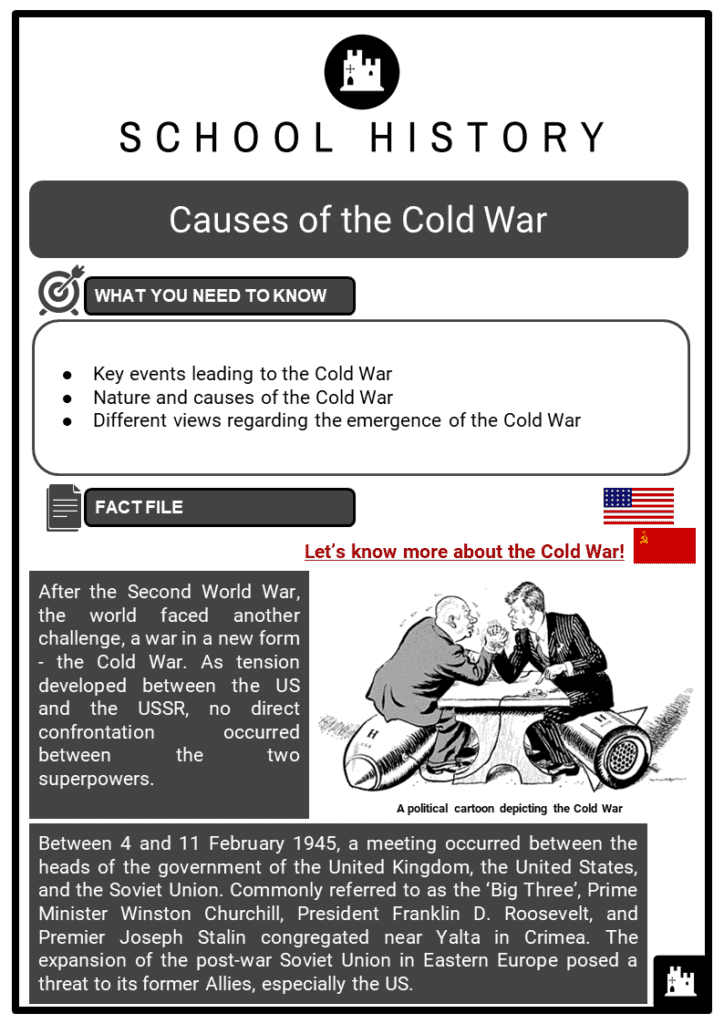The Cold War and World War II were two significant events in world history with different causes and goals. World War II was triggered by Nazi Germany’s invasion of Poland in 1939, whereas the Cold War was fueled by ideological differences between the US and Soviet Union. The Allied powers aimed to defeat the Axis powers and establish peace in World War II, while the main goal of the Cold War was to promote ideological interests and maintain a balance of power between the US and Soviet Union. Both wars had global players, resulted in significant consequences, and shaped world history. Understanding their differences and similarities highlights the importance of peace and cooperation in achieving global stability and prosperity.
Introduction
Two of the most significant events in world history were the Cold War and World War II. These two wars were fought in different times and had different causes, goals, and consequences. In this article, we will compare and contrast the Cold War and World War II, exploring their unique features, consequences, and motivations.
Causes
The causes of the Cold War and World War II were very different from one another. The trigger of World War II was the invasion of Poland by Nazi Germany in 1939. The Axis powers – Germany, Italy, and Japan – sought to expand their territorial claims and promote their national interests, which led to the outbreak of war. On the other hand, the causes of the Cold War were rooted in ideological differences between the United States and the Soviet Union. The US favored a capitalist economy, democratic government, and individual freedom, while the Soviet Union was a socialist state that sought to spread communism and limit individual liberty.
Goals
While the goals of the two wars were different, both sides aimed to emerge as victorious. In World War II, the Allies sought to defeat the Axis powers and establish peace, unity, and prosperity in Europe and the rest of the world. In contrast, the primary goal of the Cold War was to promote ideological interests and maintain a balance of power between the US and the Soviet Union. Each side sought to spread its influence and values, either by force or by persuasion, and to contain or weaken the other country.
Major Players
The major players in World War II were the Allied powers – mainly the US, Great Britain, and the Soviet Union – and the Axis powers – mainly Germany, Italy, and Japan. There were several other countries involved in the war, either voluntarily or coercively, such as France, Australia, China, and Canada. In the Cold War, the major players were the US and the Soviet Union, which became the superpowers of the world after World War II. They were supported by their respective allies, such as NATO and the Warsaw Pact, and engaged in a global competition for influence and power.
Consequences
The aftermath of the two wars had significant and far-reaching consequences for the world. In World War II, the Allies gained victory and established the United Nations, a global institution that aims to maintain international peace and security. The war led to the emergence of the US and the Soviet Union as superpowers and fueled the Cold War. The devastation caused by the war also had social, economic, and psychological impact on the people, such as the Holocaust, the Cold War, and the rise of the US as a global power. In the Cold War, the tension between the US and the Soviet Union eventually led to arms races, political conflicts, and proxy wars around the world, such as the Korean War and Vietnam War. The world became polarized into two ideological camps, the Western and the Eastern blocs, and the fear of nuclear war loomed over the globe. The Cold War ended with the collapse of the Soviet Union in 1991, which marked the triumph of the US over its ideological rival.
Conclusion
While the Cold War and World War II were different wars with different motivations and consequences, they shared some similarities. Both wars involved global powers, resulted in significant casualties and destruction, and shaped the course of world history. However, their causes and goals differed significantly, as did their impacts on the world. Understanding the differences and similarities between these two wars can give us insights into the complexities of global politics and the importance of peace and cooperation in achieving global stability and prosperity.
